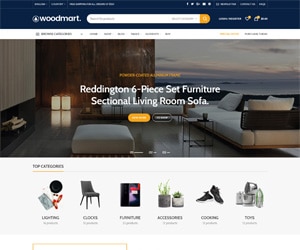Smart home technology is rapidly advancing, revolutionizing the way we interact with our living spaces. By integrating IoT devices, artificial intelligence, and voice-activated assistants, smart homes are transforming our daily routines, making them more convenient, secure, and efficient. From smart thermostats that learn your preferences to intelligent lighting systems that adapt to your activities, these innovations are reshaping how we live. Let’s explore some of the latest developments in smart home technology and their impact on our day-to-day lives.
Key Innovations in Smart Home Technology
- Smart Assistants and Voice-Controlled Devices: AI-powered assistants, like Amazon Alexa, Google Assistant, and Apple’s Siri, have become central to smart home ecosystems. These voice-controlled devices offer hands-free control over various home functions, including lighting, temperature, music, and even shopping, making everyday tasks more streamlined.
- Smart Lighting: Smart lighting systems, such as Philips Hue and LIFX, allow users to control brightness, color, and schedules through a smartphone app or voice command. These systems can create ambiance, save energy, and adjust lighting based on activity, enhancing convenience and energy efficiency.
- Smart Thermostats: Devices like Nest and Ecobee adapt to users’ schedules, learning temperature preferences and optimizing energy usage. By tracking occupancy and setting eco-friendly schedules, smart thermostats reduce energy costs and contribute to sustainability efforts.
- Intelligent Security Systems: Advanced security systems incorporate smart cameras, video doorbells, and motion sensors. With AI-powered features like facial recognition and real-time notifications, homeowners can monitor their property remotely, offering peace of mind and improved security.
- Smart Kitchen Appliances: From refrigerators with built-in cameras to smart ovens that sync with recipes, kitchen tech is becoming more intuitive. These appliances help streamline meal preparation, reduce food waste, and create a more efficient cooking experience.
- Automated Cleaning Devices: Robotic vacuums like Roomba and mopping devices automate home cleaning tasks. These devices can map out a home, navigate around obstacles, and even return to their charging stations, making it easier to maintain a clean living environment.
- Home Energy Management Systems: Smart home energy solutions monitor and optimize energy usage, integrating with solar panels and storage batteries. They help homeowners reduce energy bills by managing electricity use during peak hours and can store excess energy generated by renewable sources.
- Smart Health Monitoring: Health-focused smart home devices include smart scales, sleep trackers, and air purifiers that monitor air quality. These devices support health and wellness, offering insights into sleep patterns, indoor air quality, and even weight trends.
Key Takeaway: Each innovation brings unique benefits, enhancing convenience, security, and energy efficiency in daily life, and empowering homeowners to create a more customized and connected living environment.
The Impact of Smart Home Technology on Daily Life
Smart home innovations are making a significant impact on how people experience their living spaces, including the following:
- Enhanced Convenience and Control: Smart home technology enables remote control of various home functions, offering a level of convenience and customization that was previously unavailable. For example, users can control lights, thermostats, and security systems from their smartphones, even when they’re away from home.
- Energy Efficiency and Sustainability: By optimizing energy usage, smart thermostats, lighting, and appliances help reduce household energy consumption, lowering utility costs and supporting sustainable living.
- Increased Security: With remote monitoring, real-time alerts, and intelligent video analytics, smart security systems provide homeowners with enhanced protection. Security cameras, doorbell cameras, and smart locks allow for monitoring and controlling access from anywhere.
- Health and Well-being: Smart home devices focused on health monitoring—such as air purifiers, fitness tracking, and sleep monitors—improve the quality of life by fostering a healthy indoor environment and supporting wellness routines.
- Time Savings: Automated devices, like robotic vacuums and smart appliances, help save time by handling routine tasks. This frees up time for other activities, allowing homeowners to focus on work, hobbies, or family.
- Accessibility for All: Smart home technology is particularly beneficial for people with disabilities or the elderly, providing assistive technology for tasks like controlling lights, locking doors, and adjusting room temperature through voice commands.
Key Takeaway: Smart home technology enhances quality of life by improving convenience, security, and efficiency, while also supporting sustainable and healthy living.
Potential Challenges of Smart Home Technology
While smart homes bring many benefits, they also come with certain challenges:
- Privacy and Security Concerns: As smart home devices are connected to the internet, they are susceptible to hacking and data breaches. Proper cybersecurity measures, such as strong passwords and secure networks, are essential to protect privacy.
- Interoperability Issues: Not all smart devices are compatible with each other, which can complicate integration. Smart home ecosystems like Apple HomeKit, Google Home, and Amazon Alexa help bridge some of these gaps, but not all devices support every platform.
- Cost of Installation and Maintenance: While the prices of smart home devices are decreasing, setting up a fully automated home can still be costly. Additionally, regular updates and maintenance are required to keep devices running smoothly.
- Dependency on Internet Connectivity: Most smart home devices rely on internet connectivity to function. Network outages or connectivity issues can disrupt functionality, leaving homeowners unable to control their devices remotely.
Key Takeaway: Smart home technology requires careful consideration of privacy, compatibility, cost, and internet dependency, and users should be aware of these factors before fully integrating these technologies.
Future Trends in Smart Home Technology
The future of smart home technology looks promising, with several trends likely to enhance the capabilities and accessibility of these systems:
- Integration with Artificial Intelligence (AI): AI is expected to play a larger role in personalizing user experiences by learning behaviors and preferences. AI-powered smart assistants will become even more intuitive, making smart homes adaptable to individual routines.
- 5G Connectivity: With 5G technology, smart homes will experience faster and more reliable connectivity, allowing for better real-time data transfer and support for a larger number of devices.
- Enhanced Sustainability Features: Expect more devices designed to promote energy efficiency and environmental sustainability. Smart homes may integrate with renewable energy sources, like solar panels, to create energy-efficient, eco-friendly systems.
- Increased Focus on Health and Wellness: Innovations will include more sophisticated health monitoring devices and wellness-focused appliances, catering to the growing interest in preventive healthcare and wellness at home.
- Voice and Gesture Control Advancements: Future smart homes will rely more heavily on hands-free controls, including refined voice recognition and gesture-based interactions, making these systems even more accessible and user-friendly.
- Improved Data Security Measures: As privacy concerns rise, manufacturers will likely invest more in data security, including secure hardware, encrypted data transfer, and increased user control over data settings.
Key Takeaway: As AI, 5G, and sustainability shape the future of smart homes, we can expect increased personalization, energy efficiency, and security in smart home technology.
Practical Tips for Setting Up a Smart Home
Getting started with smart home technology can be overwhelming, so here are some tips to help make the transition smoother:
- Start Small: Begin with a few essential devices, such as a smart speaker, thermostat, or security camera, to get comfortable with managing smart home systems.
- Choose a Smart Home Ecosystem: Decide on a primary ecosystem (e.g., Amazon Alexa, Google Home, or Apple HomeKit) to ensure compatibility between devices.
- Prioritize Security: Use strong, unique passwords and keep devices updated to protect against security vulnerabilities.
- Create a Hub for Integration: Consider using a central hub, like a smart speaker or dedicated app, to control multiple devices and improve functionality.
- Experiment with Automations: Take advantage of features like routines, schedules, and triggers to automate everyday tasks and enhance convenience.
Key Takeaway: Starting with a few core devices and focusing on compatibility, security, and automation will help you successfully create a smart home that meets your needs.
Conclusion
Smart home technology is transforming our living spaces by bringing convenience, security, and efficiency into our daily lives. From AI-powered assistants to energy-saving smart thermostats, the benefits are broad and varied, enhancing our quality of life in meaningful ways. While challenges like privacy and interoperability remain, the future of smart homes looks bright, with advancements in AI, connectivity, and sustainability on the horizon. Embracing smart home innovations allows us to enjoy a more connected, customized, and environmentally friendly lifestyle.



